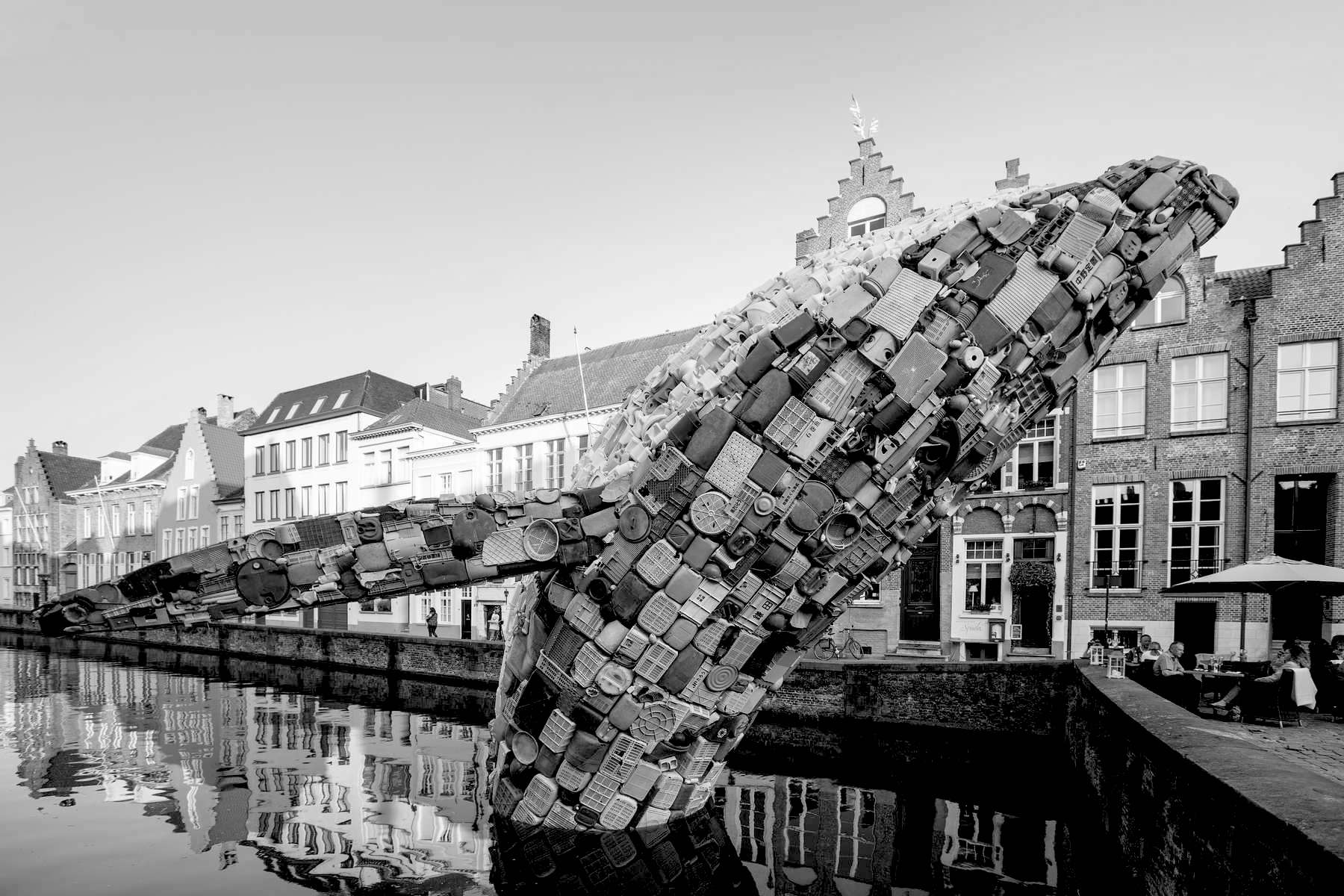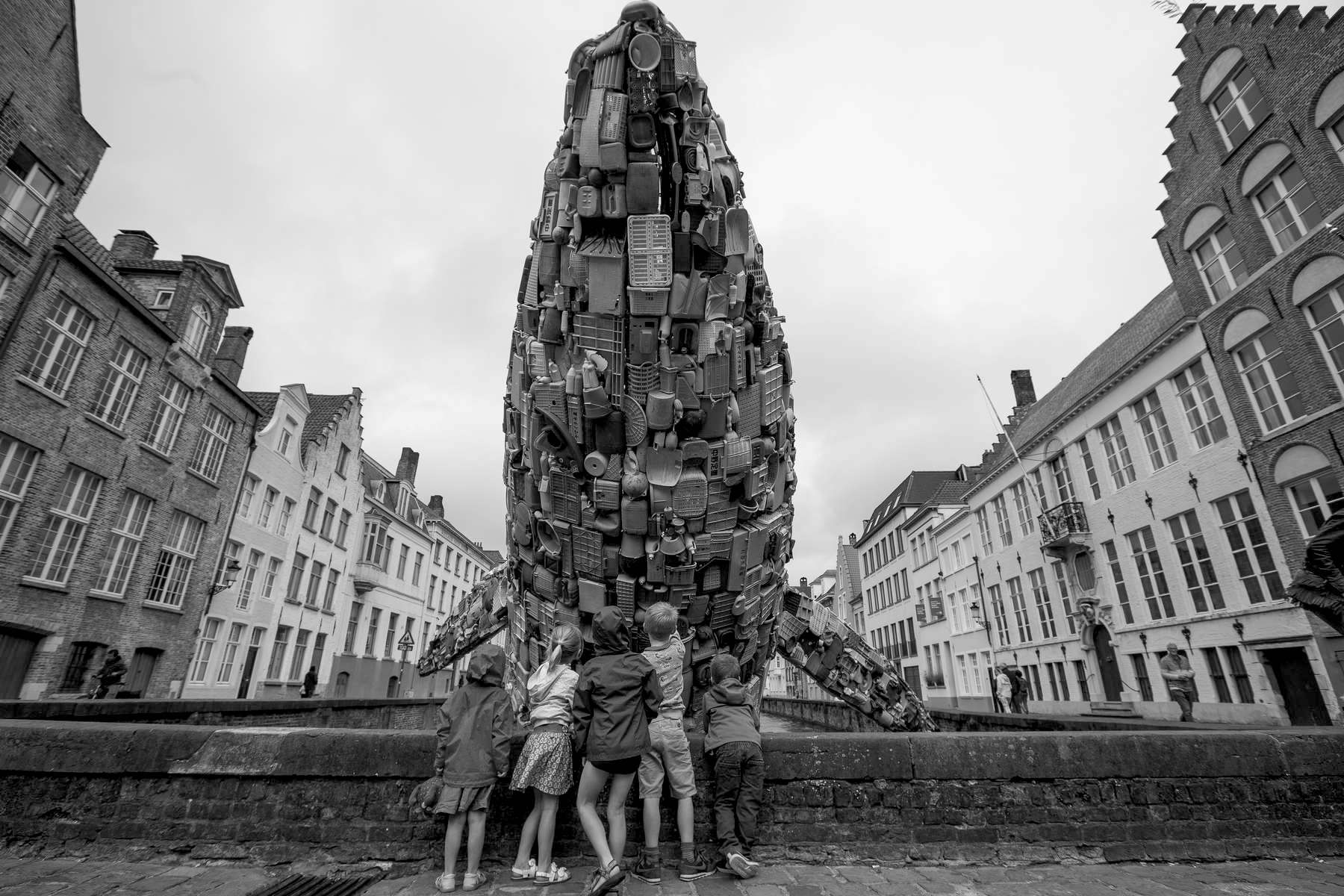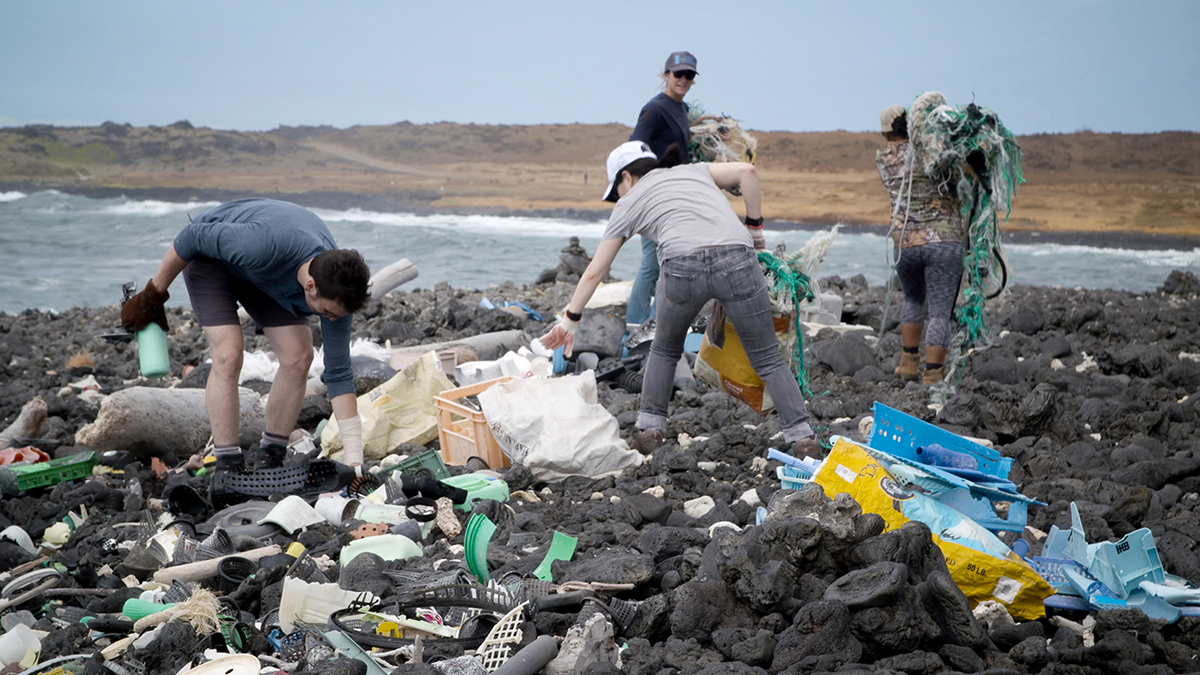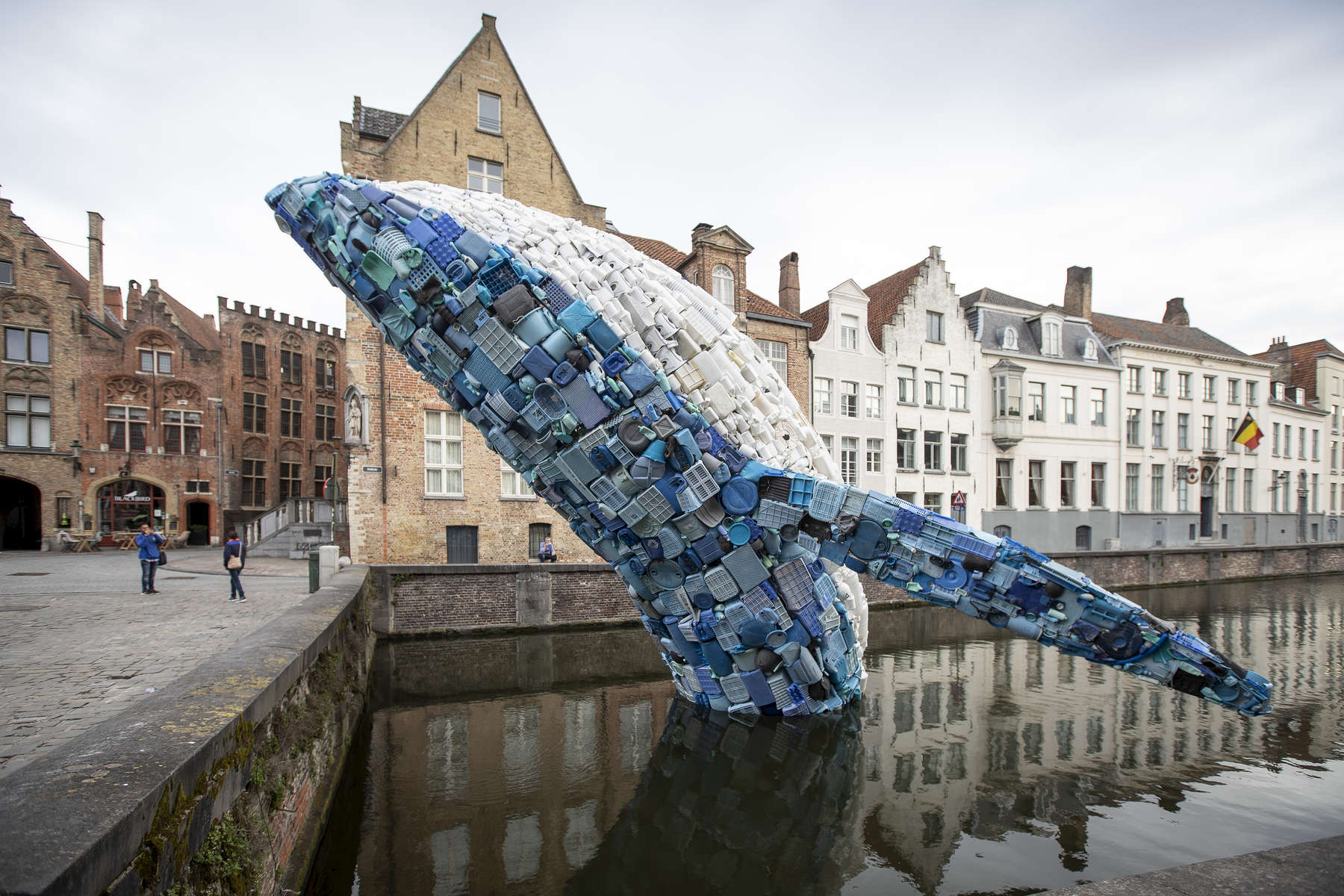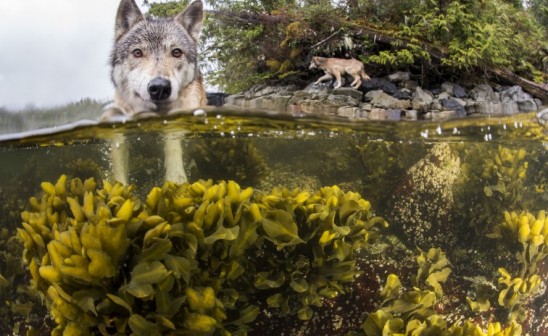It is a powerful reminder of the 150,000,000 tons of plastic waste still swimming in our waters. There is more plastic in the ocean than there are whales, and we wanted to put the scale and scope of the problem into perspective.
From May to September 2018, the city of Bruges is hosting the 2018 edition of the Triennial. Contemporary artists and architects from all over the world are brought together around one main topic, the liquid city. Many of them sought inspiration for their work in the role of liquidity in the city that is literally criss-crossed and surrounded by water. "The world is changing rapidly. Some forms of life are under pressure," says curator Michel Dewilde. "Fluidity is a symbol for change, for sociological change, political change and economic change."
We've been amazed by the installation created by StudioKCA, a whale rising up from the Canal. Made up of 5 tons of plastic waste pulled out of the ocean, "Skyscraper is a physical example of why we need to change, how we use and dispose of plastic in the world today," explain architects Jason Klimoski and Lesley Chang, co-founders of the innovative architecture and design agency StudioKCA.
Toilet seats, kids bowls, hangers ... The artists collected all the plastic that they found in Hawaii, cleaned it and started to assemble it. "The whale is almost 4 stories tall and weights several tons. And there's a tremendous mode of engineering that's going to keep it stable." We sat down with StudioKCA to learn more about their newest large-scale installation.
Hi guys, tell us a bit about the StudioKCA…
STUDIOKCA is an award-winning architecture and design firm led by Jason Klimoski and Lesley Chang. We're based in Brooklyn, New York and have projects ranging in scale and complexity from lighting fixtures and interiors, to public installations, sculptures and buildings. The practice explores the ways in which context and locality offer opportunities to design and create objects and spaces that respond directly to the demands of their programs and site-specific environmental conditions. With each project, they are interested in how materials can be crafted or purposed to solve a problem, shape a narrative, create a sense of place, and offer a unique solution that resonates with visitors and clients.
From May to September 2018, the city of Bruges is hosting the Triennial. « The Liquid city » is the main topic of this year’s event. What about your process of creation?
When we first heard the term "liquid city", we started thinking about the ocean (the first "liquid city") and our city's interaction with it, namely through waste. This led us to find out that 8 million tons a year of plastic waste flow from our cities into this first liquid city, and that there is 150 million tons of plastic waste in the oceans right now. So, we decided to create a piece that would highlight this relationship and help to bring awareness to the issue of plastic waste in our oceans.
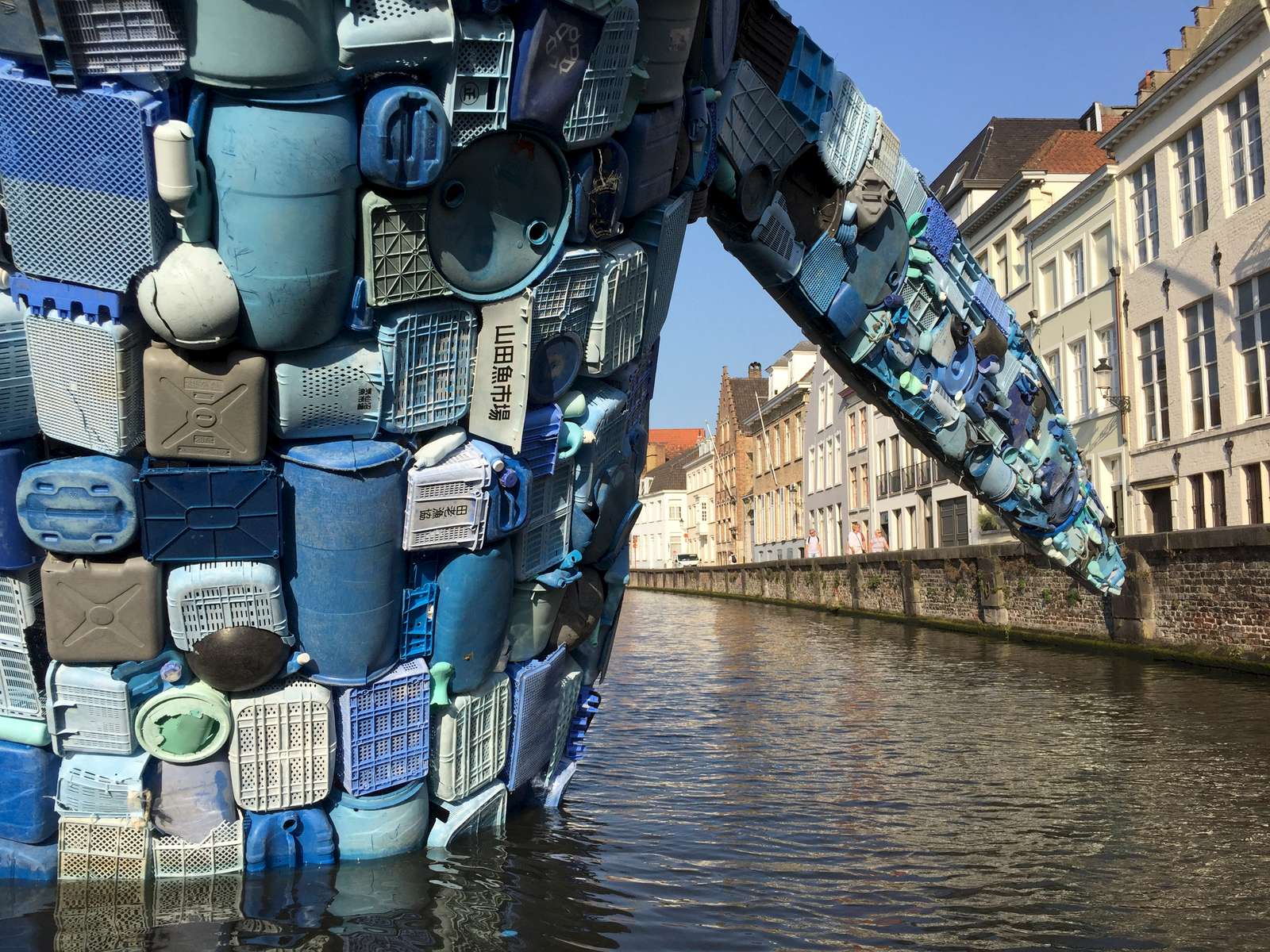
You ended up creating a gigantic whale rising up from the canal. Tell us more about your installation…
"Skyscraper", or "the Bruges Whale", is a 12 meters-tall whale made from 5 tons of plastic waste that we pulled out of the ocean. A whale, breaching the water is really the first skyscraper of the "liquid city" so it felt like the right form for our piece. Also, even though the whale is the biggest animal in the ocean, there is currently 150 million tons of plastic in our waters. That means, pound for pound, there is more plastic swimming in the ocean than there are whales, and we wanted to put the scale and scope of the problem into perspective.
You collaborated with the Hawaii Wild Fund, organizing major clean ups. Tell us a bit about these beachcombing sessions.
The HWF is a fantastic non-profit organization, and they became a great partner in our effort to collect Plastic Waste out of the ocean. It takes about 2 hours of driving over lava rock to get to the coves littered with plastic waste from the great Pacific Garbage Patch. We worked with the HWF's army of volunteers to fill up trucks and trailers full of waste to bring back to a container we kept in Hawaii. In 6 short months, we had 5 tons of waste collected. The sad part is, we could go out there for a day and clean a beach, and then go out there the very next day and find it covered, all over again.
Was it difficult to make this huge plastic whale stand up?
It is a very challenging structure. The foundation is underwater so we needed divers to make the connection to it and the main structure. The whale is also tall, 12m, and cantilevers off of a 1.2m base. What makes this even more tricky, are two enormous fins that needed to be accounted for in order to make sure the whale doesn't torque or twist. We worked very closely with our engineering partners, Thornton Thomasetti to develop a cost-effective structural solution that is very safe and also straightforward to assemble on site (and underwater).
The architecture and design agency StudioKCA is used to create large-scale installations. Tell us a bit about your previous sculptures like 'Head of Clouds' and 'Drop'.
We like creating large-scale installations. We have created some fairly large pieces for the city of New York, NASA, the WSF, and now Bruges. A couple of those have also sought to address the scope of plastic waste generated by us. Head in the Clouds, is a huge cloud shaped pavilion that was on Governors Island in New York City, made from 1 hour's worth of plastic bottles thrown away in New York City- that's 53,780 bottles! Drop was an installation we created for the MADE event in Sao Paolo. It looked like three drops of water, but was made from just 8 minutes worth of plastic bottles thrown away in Sao Paolo (more than 1,000 bottles a minute!)
What’s the message you’d like to spread regarding the problem of plastic pollution?
Plastic pollution is a problem we all have to address in our daily routines. For just 1 day, keep track of everything you touch or use that is plastic. Now consider reducing that by half, and making sure that the plastic you do use, goes into a recyling bin. If we all do this, we might help stem the flow of the nearly 8 million tons of plastic waste that ends up in our oceans each year.
How would you describe your relationship to the ocean today?
We love the ocean! The oceans are something that make our planet unique in this galaxy, and what connects of all of us together. Clogging that unique aspect of our planet with waste from things we've simply thrown away seems irresponsible. We work hard to call attention to global issues affecting our planet, and in the lives we lead to minimize our footprint on the earth and our oceans.
What’s next for you guys?
We are working now on finishing a 7m disc of stars for a small town in the Midwest (their place amongst the stars), and on a bike that has the potential to deliver off-the-grid power, water, light, and shade to areas that don't have those ammenities.
Photos: Matthias Desmet
Discover more creations from StudioKCA on their website.


